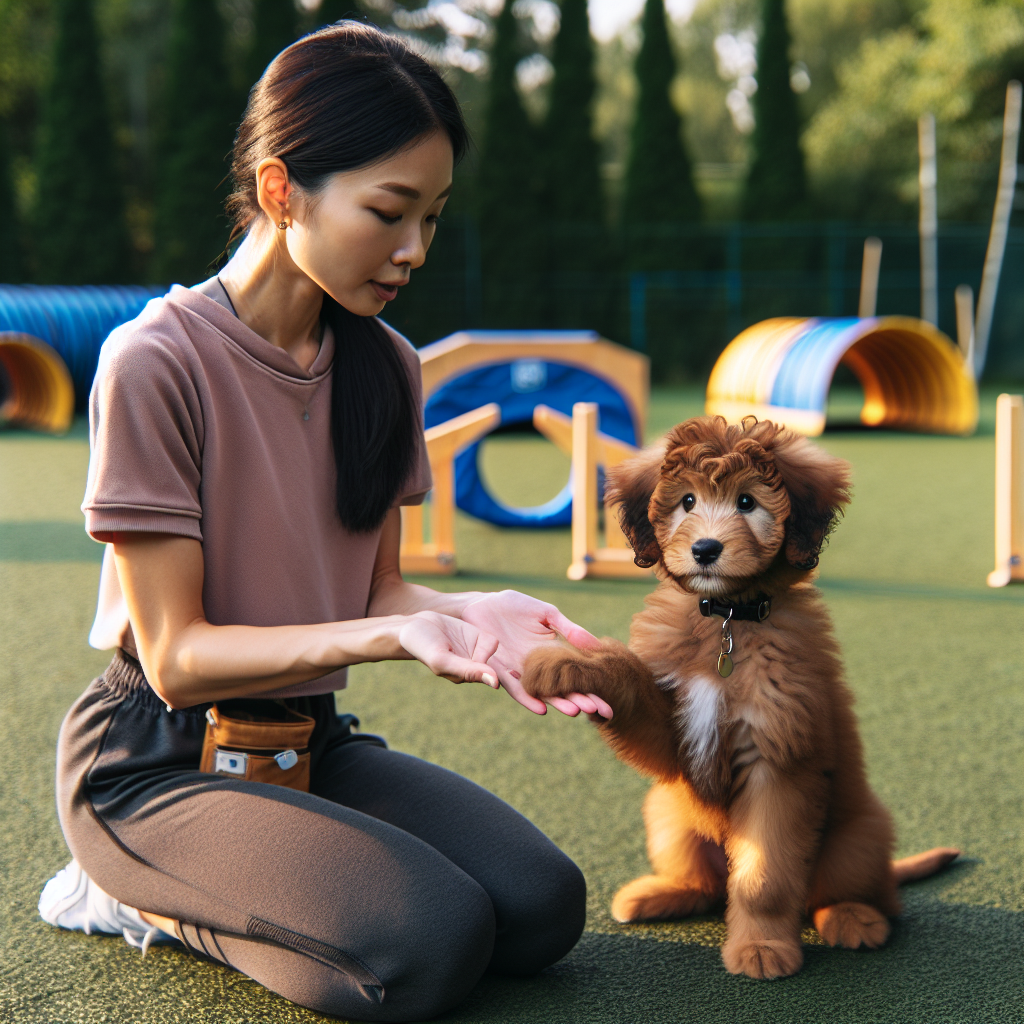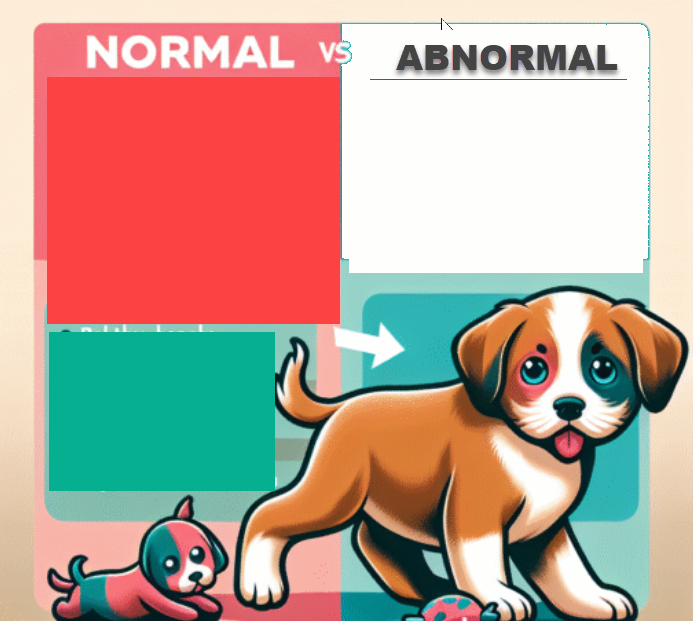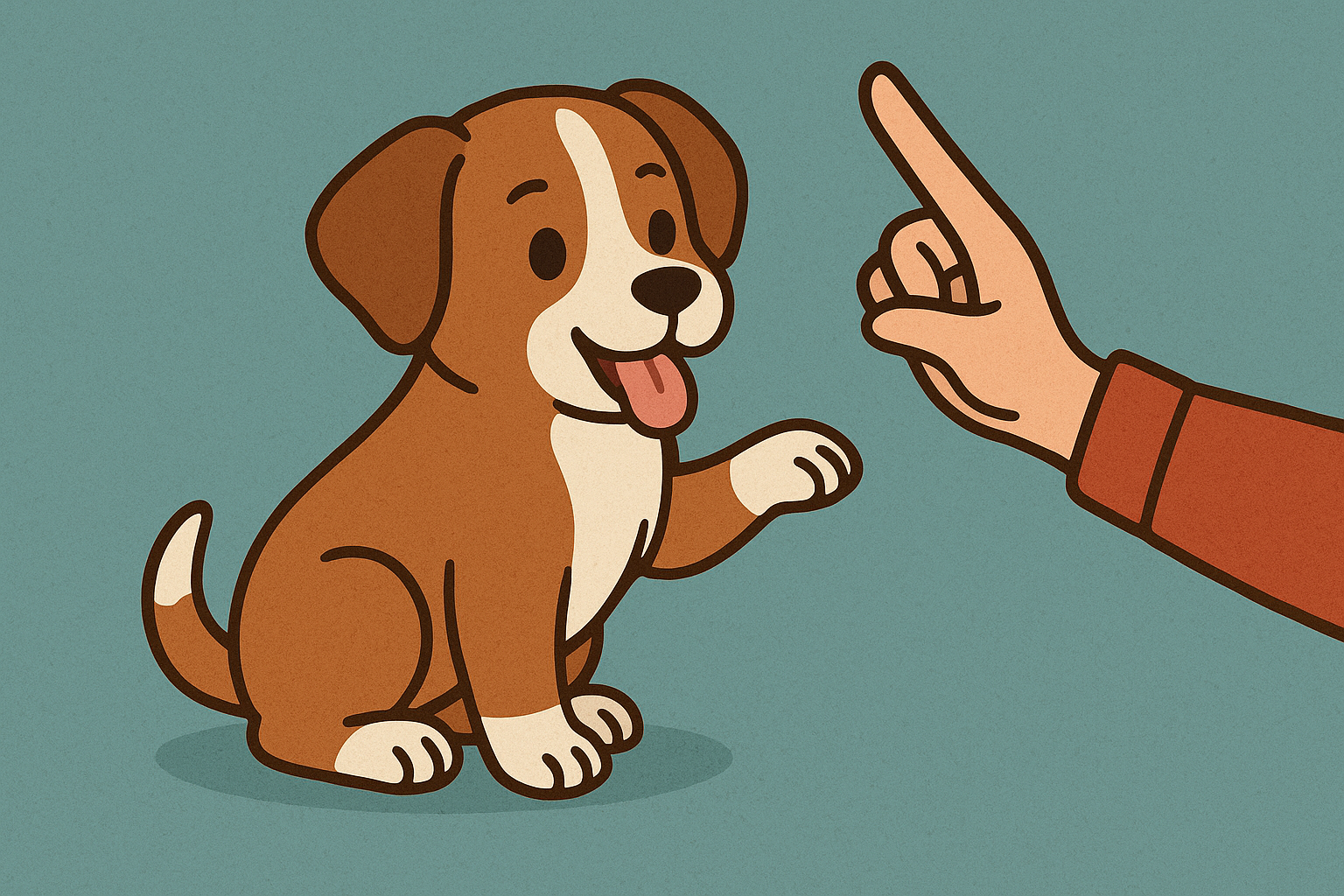Understanding Puppy Hyperactivity
Puppies are naturally energetic and curious, but it’s important to distinguish between normal energy levels and excessive hyperactivity. Often, hyperactivity can be traced back to common causes such as a lack of mental stimulation, inadequate exercise, or anxiety within their environment.
While all puppies display bursts of activity as part of their developmental stages, monitoring their patterns can help in identifying any abnormal levels of excitement. According to Dr. Ian Dunbar, a renowned veterinarian and animal behaviorist, providing appropriate outlets for their energy is crucial in preventing behavioral issues later in life.
Importance of Calm Training
Training your puppy to remain calm has several benefits, including fostering a well-adjusted adult dog. Early calm training can significantly influence long-term behavior, reducing the likelihood of anxiety-related problems. By intertwining exercise with mental stimulation, owners can bolster a puppy’s ability to relax and focus. This relationship creates a balanced routine that keeps puppies engaged without overstimulation. This approach is supported by the American Society for the Prevention of Cruelty to Animals (ASPCA), which emphasizes the role of training in maintaining dog health and happiness.
Age-Appropriate Exercises for Calming Puppies
Exercises for Puppies 8-12 Weeks Old
During this crucial developmental period, short play sessions are vital to prevent overwhelming your puppy. Gentle handling will promote bonding and trust, key aspects of a calm relationship. Introducing basic commands like “sit” and “stay” fosters discipline and gives puppies a sense of accomplishment, aiding in their self-control skills.
Exercises for Puppies 3-6 Months Old
Interactive play, such as fetch, channels a puppy’s energy into constructive activities. Simple training games enhance focus, promoting a sense of calm during learning sessions. Socialization during this stage is another pivotal activity, as interacting with other dogs and environments expands their comfort zones and decreases anxiety.
Exercises for Puppies 6-12 Months Old
For older puppies, structured walks are excellent for building endurance and reinforcing obedience. As puppies mature, advanced obedience training becomes feasible, challenging them mentally and physically. Puzzle toys and mental games keep their brains active, providing necessary mental stimulation that reduces restlessness and promotes calm behavior.
Creating a Calming Environment
Establishing a designated calm space within your home can significantly beneficial. This area serves as a retreat where they can unwind from activities. Incorporating calming aids such as music, sprays, and toys can enhance this space’s effectiveness. A consistent daily routine is essential, offering predictability and reducing anxiety triggered by unexpected changes.
Diet and Its Role in Puppy Behavior
Nutrition plays a critical role in modulating a puppy’s energy levels and overall behavior. A balanced diet ensures they have the right energy levels to learn and play without becoming hyperactive. Following a recommended feeding schedule aligns with their metabolism, helping to maintain a stable mood throughout the day. Additionally, certain supplements, like omega-3 fatty acids, can aid in calming behavior.
Signs Your Puppy is Becoming Calmer
As training progresses, several behavioral milestones indicate increased calmness. These may include longer attention spans, improved obedience, and more relaxed interaction with unfamiliar stimuli. As your puppy grows, adjusting their training to align with their maturity level is essential. Recognizing and rewarding these signs of calmness with treats or praise can further reinforce desirable behavior.
Potential Challenges and Solutions
Training setbacks are common but manageable with perseverance. If your puppy shows regression, consider consulting a veterinarian or a behavioral specialist to identify underlying causes. It may involve adjusting strategies to suit your puppy’s breed or personality. For unique challenges, patience and tailored approaches are key to overcoming hurdles.
Conclusion
Early calm training is vital for nurturing a well-balanced puppy that grows into a well-mannered dog. Patience and consistency are your allies in this journey. Stay dedicated and provide your puppy with the support they need to thrive behaviorally. For more comprehensive insights, trainers and resources are available to offer guidance tailored to your puppy’s needs. Remember, the investment you make in your puppy today will yield a lifetime of companionship and joy.
Additional Resources
- Books and Articles: “Before and After Getting Your Puppy” by Dr. Ian Dunbar is a must-read.
- Websites: The ASPCA and American Kennel Club offer resources and tips.
- Training Programs: Consider enrolling in local puppy training classes for hands-on learning.
- Professional Assistance: Seek out certified trainers or behaviorists for personalized strategies.
By diving into these resources, you’ll be well-equipped to foster a happy and calm puppy environment.# Calm Puppy Training: Age-Appropriate Exercises
Frequently Asked Questions
What is the typical age to start calm training exercises with my puppy?
Puppy calm training can begin as early as 8 weeks old. At this age, puppies are highly impressionable and responsive to forming habits. Early training helps establish foundational behaviors that support a calm demeanor. Starting age-appropriate exercises early can prevent future behavioral issues and make future training efforts significantly easier.
How can I differentiate between normal puppy energy and hyperactivity?
Normal puppy energy often involves playful spurts, curiosity, and excitement, especially when exploring new environments. Hyperactivity, however, may include excessive barking, inability to settle down, and restlessness even in calm settings. Identifying these behaviors and understanding the triggers can help tailor training methods to reduce hyperactivity effectively. Monitoring your puppy’s daily activities and energy patterns can aid in distinguishing between typical enthusiasm and hyperactive behavior.
How do I ensure my puppy’s exercises are age-appropriate?
Ensuring that exercises are age-appropriate involves understanding your puppy’s physical and mental development stages. For example, puppies aged 8-12 weeks benefit from short, controlled play sessions, while those 3-6 months can handle more interactive games like fetch. As they reach 6-12 months, they are ready for longer walks and advanced training sessions. Regularly assessing your puppy’s capabilities and adapting exercises to match their age and development will help in their training program.
Are there specific breeds that need more attention for calm training?
Yes, some breeds are naturally more energetic and may require additional focus on calm training. Breeds known for their high energy levels, such as Border Collies, Labradors, and Jack Russell Terriers, often benefit from more structured activities and mental stimulation. Understanding the characteristics of your puppy’s breed can help set realistic expectations and tailor exercises to meet their unique energy levels.
Can diet modifications help manage my puppy’s hyperactivity?
Definitely, diet plays a crucial role in managing a puppy’s energy levels and subsequent behavior. Feeding a balanced diet with appropriate nutrients supports stable energy levels, which is essential for effective training. Avoiding high-carbohydrate fillers and choosing protein-rich and omega-3 fatty acid-enriched foods can have a calming effect. Adhering to a regular feeding schedule is also important, as it keeps your puppy’s metabolism steady and aids in behavioral predictability.
What should I do if my puppy displays regression in calm behavior training?
If your puppy exhibits regression, remain patient and identify if any changes might be contributing to this shift. Introduce consistent routines, minimize drastic environmental alterations, and maintain the calm training strategies previously implemented. It can also be helpful to revisit basic commands and exercises. For persistent challenges, consulting a veterinarian or a professional animal behaviorist can provide insights into refining training methods to suit your puppy’s needs.








